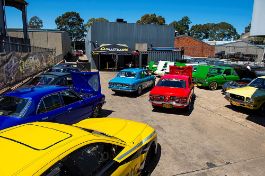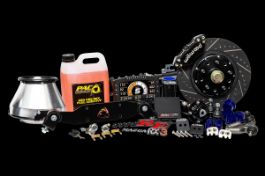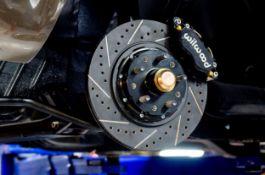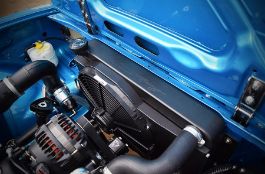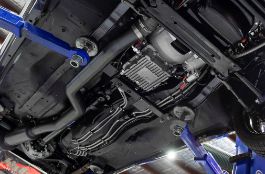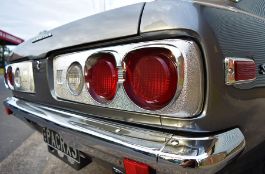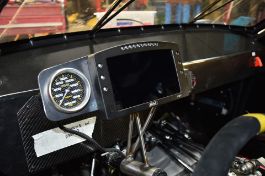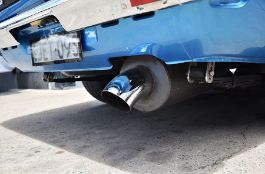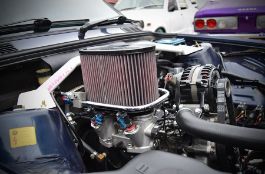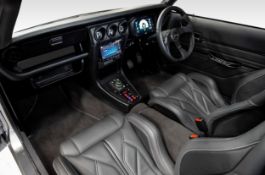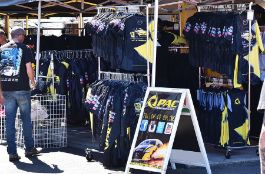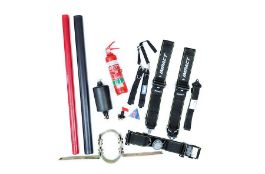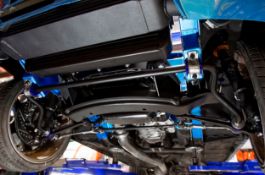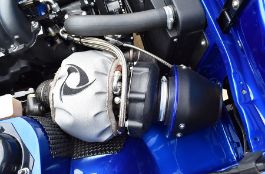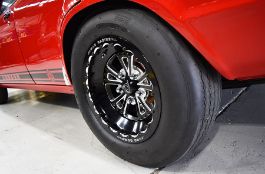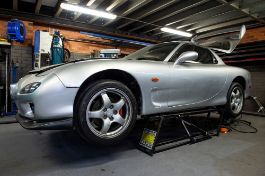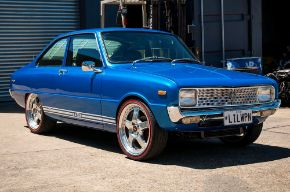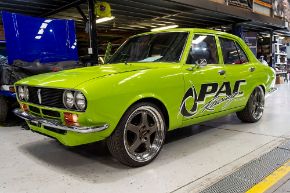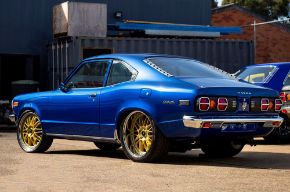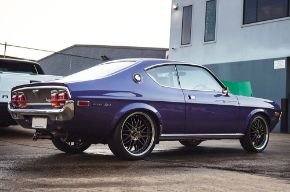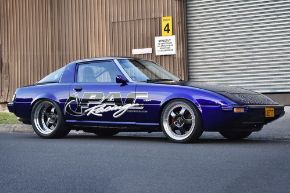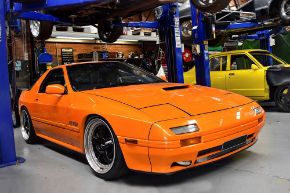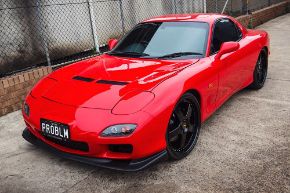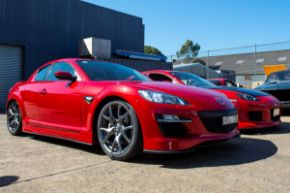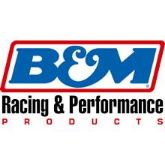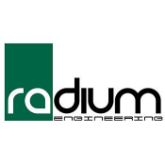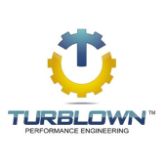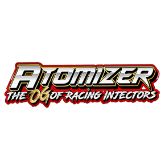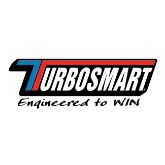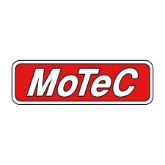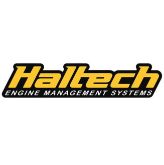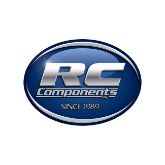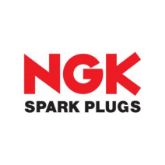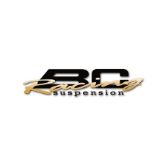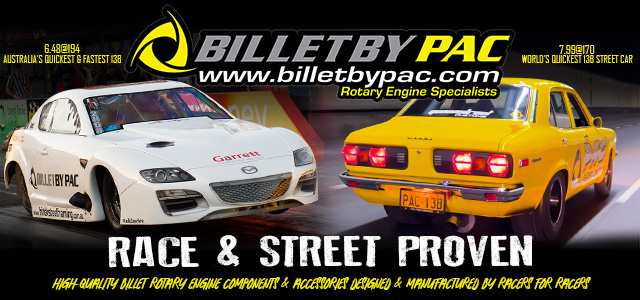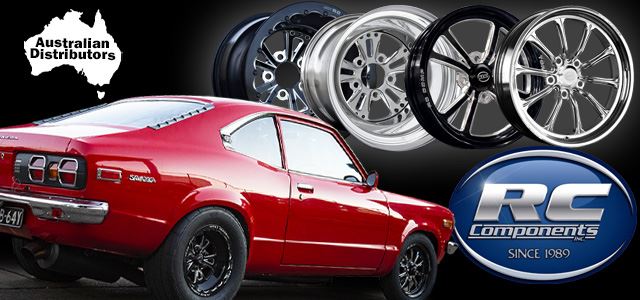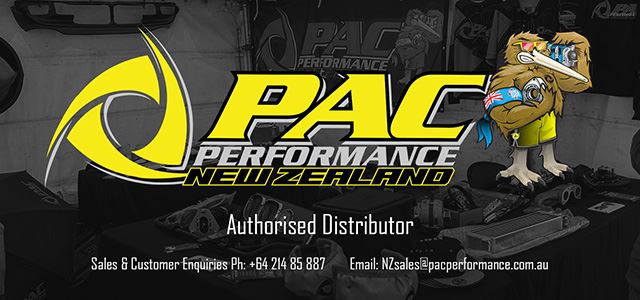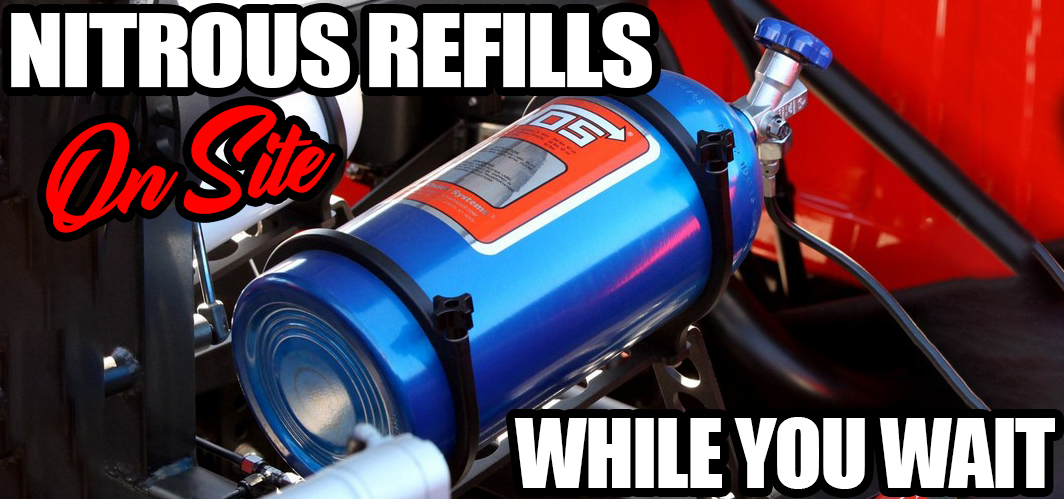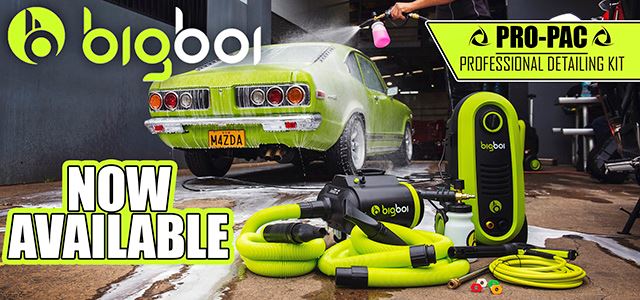GARRETT TURBO TECH - BURST & CONTAINMENT : ENSURING TURBOCHARGER SAFETY

The boys and girls at Garrett are not only focused on producing the finest high performance turbochargers, they also work hard to maintain the highest standard in product safety, setting the mark for others to follow. In this feature we take a look at an extremely important part of turbocharger manufacturing, Burst & Containment. A topic that all High Performance turbo users and enthusiasts should be aware and one of the main reasons to steer clear of inferior overseas reproduction/copy turbochargers.
“What would happen if one of the wheels in my turbo were to burst at speed? Would the housings be strong and resilient enough to contain all the pieces?”
These are questions that have not commonly been asked in the performance turbocharging world. For the average boosted street-driven car equipped with a quality turbo from a reputable manufacturer, chances of an actual wheel burst are slim to nil. In amateur and professional motor sports however, the likelihood of a compressor or turbine wheel coming apart can become very real, very quickly.
As the limits of today’s turbos are reached, they are subjected to higher speeds, hotter temperatures and severe duty cycles. New wheels, housings and complete turbos are constantly being developed to outperform the previous generations.

The temptation can be great to ignore safety and go for broke with the lightest wheels and thinnest housings possible, in order to eke out every last bit of performance from the turbo and the race vehicle. But if a turbo manufacturer focuses on performance only and does not qualify their products to contain both compressor and turbine wheel bursts, then there is no guarantee that the high-velocity wheel fragments will remain inside the housings if the turbo is intentionally or accidentally pushed past its safe operating limits.
This feature along with the full Garrett® white paper (attached - see below) ) will explain wheel burst: what it is and how it can happen, the amount of energy released by a burst, and how each and every Garrett® OE and aftermarket turbocharger for sale to the public is designed and qualified to safely contain the fragments of a bursting wheel.
Definitions of Burst & Containment
What is a wheel burst? Simply put, it is the failure of a turbine or compressor wheel to physically hold itself together against centrifugal forces. At the speeds and temperatures reached by turbocharger turbine and compressor wheels, the strength limit of the wheel material becomes crucial for durability and safety.

Turbo shaft speed can safely skyrocket to over 200,000 rpm for smaller units such as a Garrett® GT15, and even the largest GT55s can reach a still astronomical 90,000 rpm without cause for alarm. Turbine wheels flowing highly-boosted exhaust gas can reach 1800°F (980°C) and higher in typical turbo vehicles, and in top-level motorsports such as WRC they can regularly get up to 1950°F (1050°C).
Turbochargers are put through a huge amount of centrifugal stress during operation and the wheels are designed to resist these stresses at high temperatures however, as always there are limits; a combination of excessively high speed and temperature is a recipe for burst.
There are two major types of wheel burst: blade and hub. A blade burst occurs when the centrifugal force at speed acting to pull the blades off of the central hub overcomes the mechanical strength of the root sections connecting the individual blades to the hub. Under these conditions if a blade root is too weak it could leave the hub as easily as a petal is plucked from a flower.
Hub burst, on the other hand, is the extreme case wherein the main hub that the blades are attached to reaches its ultimate strength limit and breaks into two, three or more large pieces through the centre line of the wheel. The hub is more compact than the blades and is a continuous mass, therefore stronger than the root of each thin blade. However, the hub centreline is at the rotational centreline of the wheel, meaning that the internal stresses are at their maximum at the hub’s core. The hub can actually burst at extreme speeds and temperatures. In some cases it may burst after the blades have been ejected, and during a Garrett® burst containment housing qualification test the hub is intentionally weakened to cause a worst-case scenario burst.

Housing Design – Absorbing Burst Energy
In the event of a turbo failure steps need to be taken to ensure that all material is contained so as to not cause further damage or injury. If the turbine or compressor housing is too thin, too brittle, too weak, too hot, or if the material is defective, it will not be able to effectively absorb all of the violent kinetic energy released by a wheel burst. Consequently it will provide little protection for the turbocharger’s surroundings if fragments of the wheel come through the housing without losing much of that energy.
When designing a turbine or compressor housing from scratch, Garrett® engineers have a tall order to fill. They must balance the equally important requirements of high flow capacity, high aerodynamic efficiency, low weight, very tight clearances and tolerances to the wheel, dimensional stability at high temperature, and of course the capacity to contain bursts and other wheel failures.
The ability of a particular housing to contain a burst is a function of overall shape, material wall thickness, strength, elongation and ductility. Shape and wall thickness are most critical in the region called the containment band, which is the outermost wall of the housing that will see the brunt of the impact from wheel fragments during a burst. It is only when all these key points are taken into consideration when manufacturing that you will be able to successfully containing a wheel burst.

Causes of Burst
What causes bursts to occur? For one, the aforementioned combination of high temperature and high speed reduces material strength dramatically just as the internal stresses are becoming enormous. This is the obvious, albeit extreme, cause for wheel burst.
Although a turbocharger’s compressor wheel is usually made of aluminium, which has a lower material strength than that of the nickel-based Inconel turbine wheel, the lower density of aluminium leads to the compressor burst speed typically being slightly higher than the turbine. However, the higher mass of the turbine wheel means that it is usually more difficult to contain in the event of a burst.
One possible scenario is compressor wheel failure leading to turbine wheel burst. If the compressor wheel bursts or becomes detached from the shaft, it is no longer loading up the turbine with aerodynamic forces and inertia, but the exhaust flow usually continues if the engine is still running. After compressor failure the turbine wheel and shaft can instantly spool up to the speed at which the turbine wheel will naturally burst. Obviously, this is a bad day for the turbocharger!
Another less intuitive cause for wheel bursts is fatigue. All metals have a fatigue life; that is, loaded with enough stress cycles (even below the strength limit) the material will eventually crack and fail despite the fact that the forces at work are not enough to hurt the wheel on their own without this repetitive cycling.

Every new Garrett® aftermarket and original equipment turbocharger is qualified to contain compressor and turbine wheel bursts – that much should be clear. But how is this verified? When a new wheel is designed, testing of unmodified parts is conducted to determine the “natural” burst speed of the wheel.
Turbochargers are built and instrumented with speed and temperature sensors and installed in a specially constructed containment stand that supplies hot compressed air to the turbine. The turbocharger is brought up to speed and temperature for a dwell period, and then intentionally and immediately sped up to well beyond the qualified speed limits. Turbo shaft speed is recorded and a successful test will empirically reveal the natural burst speed.
When a new Garrett® housing is developed, it is qualified in conjunction with the specific compressor or turbine wheel that will be running inside of it. New combinations of existing wheels and housings are also qualified.
If the housing in question is a compressor housing, the back plate is included as part of the qualified combination since it forms one wall of the diffuser (throat) and wheel fragments pass through this channel on their way to the containment shroud.

Garrett® by Honeywell qualifies turbocharger housings to contain radial bursts, but cannot prevent the turbine wheel from escaping through the turbine housing outlet because of the need for efficient discharge of turbine flow. In the case of an aftermarket turbo build, the vehicle owner must assume responsibility to prevent unsafe escape of the turbine wheel, should the shaft or weld joint fail.

Consider a turbine housing with a straight downpipe and no means of slowing down an escaping wheel. If the wheel-to-shaft weld joint or hub fails, or if the shaft breaks allowing the turbine wheel to detach, angular momentum is conserved and the wheel can exit the outlet of the turbine housing with a tremendous amount of energy due to the high rotational speed.
Even an un-burst intact turbine wheel skipping down a racetrack at rotational tip speeds of 2000 ft/s (1360 mph) can have the potential to damage anything that it contacts, until this energy is absorbed and/or the wheel speed slows down due to air resistance.

Conclusion
Turbochargers are generally very reliable, but even the highest quality turbos may fail when subjected to excessive abuse. A wheel burst is the extreme example of turbo failure but is a contingency that must be planned for with utmost care.
Using a non-burst containment qualified turbocharger presents a very real risk to the end user and their surroundings, especially in racing situations. Garrett® by Honeywell performance aftermarket, replacement aftermarket and original equipment turbochargers are all qualified to successfully contain a wheel burst, as long as the specific combination of Garrett® wheels and housings intended for the turbo remains unaltered.
Using a genuine Garrett® turbocharger for highway, street or racing use ensures that a catastrophic wheel burst will be successfully contained by a high-quality housing that was designed and qualified from the ground up to do so.

If you would like to read more about this important topic and check out some of the more in-depth technical side of things, hit the link below to view the full Garrett Technical Article.
/Articles/9881/Garrett_White_Paper_02_Burst__Containment.pdf
_

